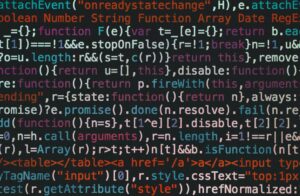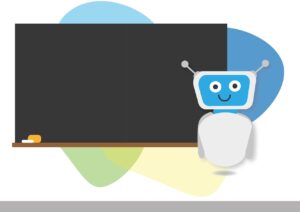ChatGPT code debugging
Real-world case studies and problem-solving tips
Introduction: Debugging Made Easy with ChatGPT
Every developer — beginner or expert — dreads that moment: a mysterious error pops up, your code breaks, and your productivity takes a nosedive. Traditionally, debugging has been one of the most time-consuming and frustrating parts of programming.
But in 2025, things are changing.
With the help of ChatGPT, debugging is no longer a solo battle. It’s become a collaborative process — where an intelligent AI helps identify, explain, and fix coding problems in real-time.
Whether you’re working with Python, JavaScript, Java, C++, or even frameworks like React, Django, or Node.js, ChatGPT acts like your always-on debugging buddy — diagnosing errors, suggesting fixes, and even teaching you better coding practices.
This article dives deep into how you can debug code with ChatGPT, boost your productivity, and become a smarter, more confident programmer.
Table of Contents
-
Why Debugging Is a Developer’s Bottleneck
-
How ChatGPT Helps You Debug Code
-
What Kinds of Errors ChatGPT Can Solve
-
How to Format Code for Debugging with ChatGPT
-
Debugging Python Code with ChatGPT
-
Debugging JavaScript & React Code with ChatGPT
-
Fixing Errors in Java, C++, and Other Languages
-
Real-World Debugging Scenarios
-
ChatGPT vs Stack Overflow: Which Is Better?
-
Tips to Improve Your Debugging Prompts
-
Limitations of Debugging with ChatGP
-
Future of AI-Powered Debugging
-
Conclusion: Let AI Handle the Bugs
1. Why Debugging Is a Developer’s Bottleneck
Ask any developer where they spend the most time, and debugging is always at the top of the list.
The typical debugging workflow includes:
-
Reading long stack traces
-
Searching error messages online
-
Checking documentation
-
Trying out random fixes
-
Getting stuck in “trial and error” loops
Debugging breaks your momentum, slows feature delivery, and drains confidence — especially if you’re a solo coder or just starting out.
That’s where ChatGPT flips the game.
2. How ChatGPT Helps You Debug CodeChatGPT helps in several key ways:
- Explains errors in plain English
- Identifies logic bugs in your code
- Suggests precise fixes
- Offers better ways to write the code
- Teaches you WHY something broke
Unlike traditional IDEs or Google searches, ChatGPT adapts to your skill level. Whether you need a beginner-level explanation or expert-level insight, it meets you where you are.
3. What Kinds of Errors ChatGPT Can Solve
ChatGPT can help you fix:
✅ Syntax Errors
Missing parentheses, commas, or indentation issues.
✅ Runtime Errors
Division by zero, undefined variables, null pointer exceptions.
✅ Logic Errors
Code that runs but gives incorrect output.
✅ Framework-Specific Bugs
Errors in React hooks, Django models, or Flask routing.
✅ Performance Bottlenecks
Slow loops, memory leaks, redundant computations.
4. How to Format Code for Debugging with ChatGPT
To get the most accurate help, follow these steps:
-
Paste the full code block (or the relevant part).
-
Include error messages or stack trace.
-
Briefly explain what the code is supposed to do.
-
Mention the programming language and framework.
Example Prompt:
“I’m working on a Python script to parse JSON data from an API, but it throws a TypeError. Here’s the code and the error message. Can you help me fix it?”
The clearer your context, the better the solution.
5. Debugging Python Code with ChatGPT
Python’s dynamic nature makes it powerful — but also easy to break.
ChatGPT can help with:
-
Import errors
-
Misuse of data types (str, int, list, dict)
-
Incorrect use of decorators or async functions
-
Errors with libraries like Pandas, NumPy, or Requests
Prompt Example:
“Why is my Python loop skipping elements in a Pandas DataFrame?”
ChatGPT will check your logic, highlight common pitfalls, and provide corrected code.
6. Debugging JavaScript & React Code with ChatGPT
From frontend UI bugs to asynchronous JS issues, ChatGPT is a lifesaver.
It helps fix:
-
Undefined variables and scope issues
-
State management bugs in React
-
Hook misuse or rendering issues
-
Callback hell and promise handling
-
DOM manipulation errors
Example:
“My React component isn’t updating when I click a button. Here’s the code — what am I doing wrong?”
ChatGPT can explain lifecycle methods, fix hook usage, or simplify your JSX logic.
7. Fixing Errors in Java, C++, and Other Languages
Static languages like Java and C++ have more verbose errors, but ChatGPT can parse and simplify them.
In Java:
-
NullPointerException
-
Type mismatch
-
Syntax and scope issues
-
Misuse of classes or interfaces
In C++:
-
Segmentation faults
-
Memory leaks
-
Pointer arithmetic issues
-
Incorrect template usage
ChatGPT also supports languages like Go, Rust, Ruby, and even Bash scripting.
8. Real-World Debugging Scenarios
🔧 Broken Login Flow in Flask
A user couldn’t redirect after login. ChatGPT identified missing session management and improper use of redirect() in Flask.
🔧 Slow Loop in Node.js
A dev’s app was freezing during API calls. ChatGPT rewrote the loop to use Promise.all for parallel execution — reducing execution time by 70%.
🔧 React Re-rendering Bug
ChatGPT spotted a missing dependency in a useEffect() hook, which was causing infinite re-renders.
9. ChatGPT vs Stack Overflow: Which Is Better?
Stack Overflow is a goldmine of knowledge — but it has limitations:
-
You need to search through dozens of answers
-
Many answers are outdated
-
Toxic or unwelcoming responses discourage beginners
ChatGPT, on the other hand:
-
Gives instant help in one place
-
Explains code without judgment
-
Works with YOUR code, not someone else’s
That said, Stack Overflow is still useful for edge cases. The best coders use both tools together.
10. Tips to Improve Your Debugging Prompts
✅ Be specific: Include language, goal, and what’s broken
✅ Use comments to clarify what each part of the code does
✅ Paste clean, properly formatted code
✅ Ask follow-up questions if the first fix doesn’t work
✅ Request explanations, not just fixes — it helps you learn
11. Limitations of Debugging with ChatGPT
While powerful, ChatGPT isn’t perfect:
-
It doesn’t run code in real time (yet)
-
May miss context if not provided clearly
-
Might suggest outdated syntax
-
Won’t know your full project structure or dependencies
Always test AI-generated fixes and cross-check suggestions, especially for security or production code.
12. Future of AI-Powered Debugging
In the future, ChatGPT and AI tools will:
-
Integrate directly into IDEs for real-time debugging
-
Auto-suggest fixes based on historical codebases
-
Visualize bugs and trace logic like a mind map
-
Collaborate with multiple agents for full-stack troubleshooting
We’re heading toward a world where AI doesn’t just fix bugs — it prevents them before they happen.
13. Conclusion: Let AI Handle the Bugs, You Focus on Building
Debugging isn’t going away — but it doesn’t have to be painful.
With ChatGPT by your side, you can:
-
Understand bugs faster
-
Learn better coding habits
-
Fix problems without endless Googling
-
Spend more time building, less time stuck
Whether you’re a newbie writing your first Python script or a senior developer scaling enterprise apps, ChatGPT turns debugging into a dialogue — not a struggle.
Next time your code breaks, don’t panic. Just ask ChatGPT.
14. Integrating ChatGPT into Your Daily Developer Workflow
ChatGPT isn’t just a tool for emergency bug fixes — it’s quickly becoming a daily companion in modern development workflows.
Here’s how developers integrate ChatGPT throughout the day:
-
During planning: It helps outline features, write pseudocode, and anticipate technical challenges before writing a single line.
-
While coding: Developers use it to understand syntax, translate pseudocode to real code, or convert between programming languages.
-
When debugging: It analyzes stack traces, pinpoints logic errors, and explains strange output.
-
Post-debugging: ChatGPT can help generate comments, write tests, or optimize the final version of your code.
By keeping ChatGPT open in a browser tab or using its VS Code extension, developers can go from “problem” to “solution” in a single window — removing friction and improving coding flow.
15. ChatGPT for Beginners vs. Advanced Developers
👩💻 For Beginners:
Beginners often struggle with:
-
Reading error messages
-
Understanding stack traces
-
Knowing where to start fixing
ChatGPT becomes a gentle guide. It explains what’s going wrong in plain English, provides example-based learning, and avoids the judgment that often discourages newbies on public forums.
Prompt Example for Beginners:
“What does this error mean in Python: TypeError: string indices must be integers?”
ChatGPT will explain the data type confusion, show corrected code, and walk you through the fix like a teacher.
🧑💻 For Experienced Developers:
Advanced developers use ChatGPT for:
-
Debugging edge cases
-
Performance profiling suggestions
-
Architecture corrections
-
Framework-specific issues (e.g., Redux errors, Django middleware bugs)
It becomes a thinking partner, validating hypotheses, suggesting alternative implementations, and reducing time spent searching docs or Stack Overflow.
Prompt Example for Experts:
“This Django view is returning a 500 error when uploading images. I’m using AWS S3, and here’s the full traceback.”
ChatGPT can identify the misconfiguration, missing headers, or file permission issues quickly.
16. Tools That Combine with ChatGPT for Seamless Debugging
While ChatGPT in the browser is powerful, pairing it with developer-focused platforms and plugins takes it even further.
🧩 Popular integrations:
-
VS Code + CodeGPT Plugin: Lets you ask ChatGPT questions, fix bugs, or explain functions right inside your code editor.
-
Replit AI: For instant code suggestions and debugging in a cloud-based IDE — perfect for solo coders and students.
-
Kite (AI Copilot): Combines local autocompletion with ChatGPT’s reasoning for faster coding.
-
Codeium: Offers inline suggestions powered by large language models, alongside ChatGPT-compatible workflows.
-
Code Interpreter / Advanced Data Analysis (ADA): Perfect for debugging data processing scripts or math-heavy logic.
Using these tools, ChatGPT becomes more than a chatbot — it becomes a debugging co-pilot embedded into your dev environment.
17. What ChatGPT Can Teach You While Debugging
Perhaps the most underrated aspect of debugging with ChatGPT is how much you can learn in the process.
While it’s tempting to just paste an error and grab the fix, asking why the error occurred transforms a simple fix into a learning opportunity.
Here’s what ChatGPT can teach:
-
Programming best practices (e.g., DRY principles, clean code)
-
How to write unit tests to prevent future bugs
-
How to refactor error-prone logic
-
Security tips when handling user input or authentication
So every bug becomes a lesson. Every crash becomes a course. And every fix makes you a better developer — not just a faster one.
FAQs: Debug Code with ChatGPT in 2025
1. Can ChatGPT really help debug code?
Yes, ChatGPT can identify, explain, and suggest fixes for coding errors.
2. Which languages can ChatGPT debug?
It supports Python, JavaScript, Java, C++, HTML/CSS, and many others.
3. How do I share my code with ChatGPT for debugging?
Paste your code and describe the issue clearly. The more context, the better.
4. Can ChatGPT fix logic errors too?
Yes, it can help with syntax and logic issues, but testing is still important.
5. Is ChatGPT better than traditional debugging tools?
It’s a great complement — especially useful for fast suggestions and understanding errors.
6. Does ChatGPT suggest best practices too?
Yes, it often suggests optimized, readable, and cleaner code alternatives.
7. Can beginners use ChatGPT for learning debugging?
Absolutely. It explains errors in simple terms, making it beginner-friendly.
8. Is ChatGPT accurate for all debugging tasks?
Mostly, yes — but always test and verify its suggestions.
9. Can ChatGPT help with fixing bugs in projects?
Yes, from small scripts to full projects — it can troubleshoot module by module.
10. Is ChatGPT free for debugging help?
Yes, the free version works well. Paid versions like GPT-4o offer deeper support.








